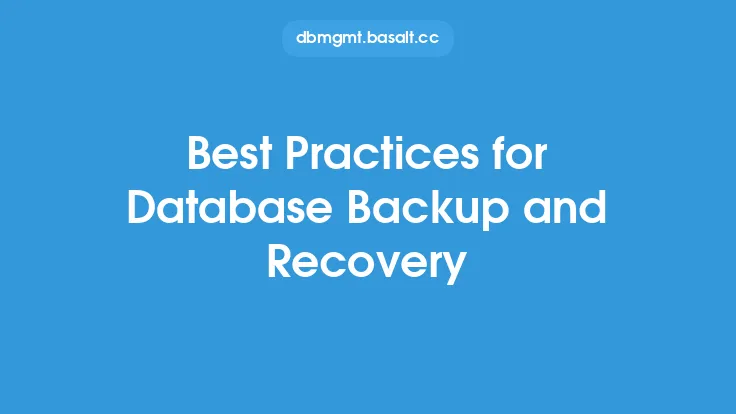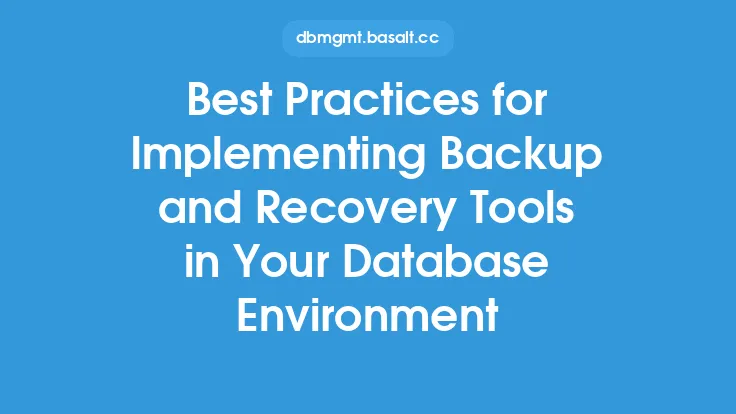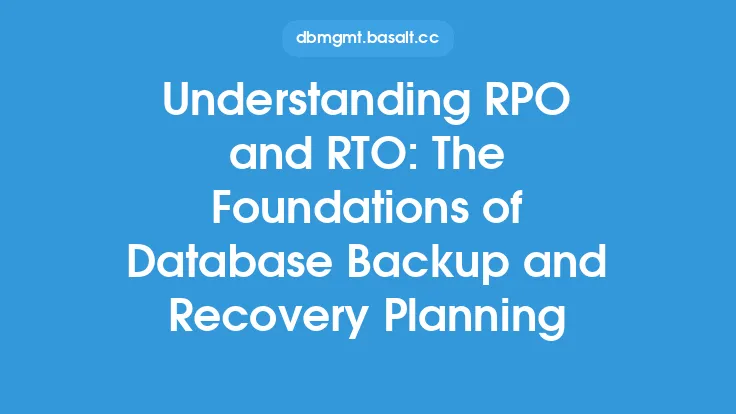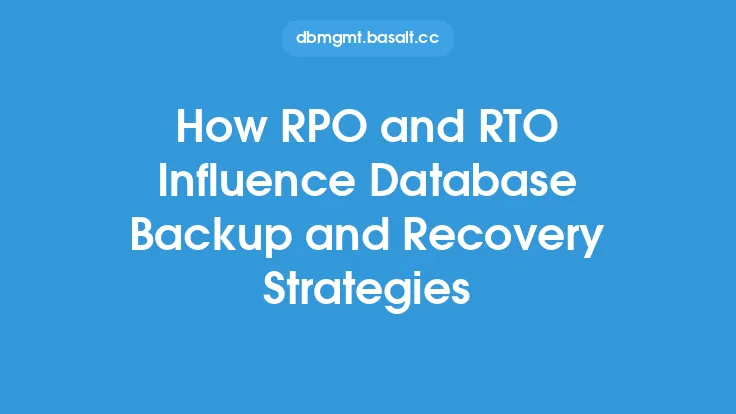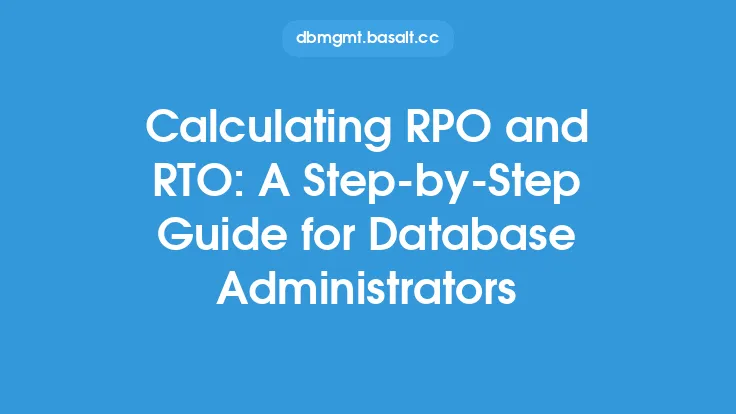When it comes to database backup and recovery, two crucial metrics that database administrators must consider are the Recovery Point Objective (RPO) and the Recovery Time Objective (RTO). These metrics are essential in ensuring that databases are properly backed up and can be recovered quickly in the event of a disaster or data loss. In this article, we will delve into the best practices for implementing RPO and RTO in database backup and recovery, providing database administrators with the knowledge they need to ensure their databases are properly protected.
Introduction to RPO and RTO
RPO and RTO are two related but distinct metrics that are used to measure the effectiveness of a database backup and recovery strategy. RPO refers to the maximum amount of data that can be lost in the event of a disaster or data loss, while RTO refers to the maximum amount of time that it should take to recover a database after a disaster or data loss. In other words, RPO is about data loss, while RTO is about downtime. By understanding these metrics, database administrators can develop a comprehensive backup and recovery strategy that meets the needs of their organization.
Best Practices for Implementing RPO and RTO
Implementing RPO and RTO in database backup and recovery requires careful planning and consideration of several factors. Here are some best practices that database administrators can follow:
- Conduct a thorough risk assessment: Before developing a backup and recovery strategy, it is essential to conduct a thorough risk assessment to identify potential risks and threats to the database. This will help determine the optimal RPO and RTO values for the database.
- Determine the optimal backup frequency: The backup frequency will depend on the RPO value. For example, if the RPO is set to 1 hour, backups should be taken every hour to ensure that no more than 1 hour's worth of data is lost in the event of a disaster.
- Choose the right backup method: There are several backup methods available, including full backups, incremental backups, and differential backups. The choice of backup method will depend on the RPO and RTO values, as well as the size and complexity of the database.
- Test the backup and recovery process: It is essential to test the backup and recovery process regularly to ensure that it is working correctly and that the RPO and RTO values can be met.
- Monitor and analyze backup and recovery metrics: Database administrators should monitor and analyze backup and recovery metrics, such as backup completion rates, recovery times, and data loss, to ensure that the RPO and RTO values are being met.
Implementing RPO and RTO in Different Database Environments
RPO and RTO values can vary depending on the database environment. For example, a database that is used for critical business operations may require a lower RPO and RTO than a database that is used for non-critical operations. Here are some considerations for implementing RPO and RTO in different database environments:
- Production databases: Production databases require a low RPO and RTO to ensure that business operations are not disrupted in the event of a disaster or data loss.
- Development databases: Development databases may require a higher RPO and RTO, as data loss may not have a significant impact on business operations.
- Cloud-based databases: Cloud-based databases may require a different approach to RPO and RTO, as the cloud provider may have its own backup and recovery processes in place.
Tools and Technologies for Implementing RPO and RTO
There are several tools and technologies available that can help database administrators implement RPO and RTO in their database backup and recovery strategy. Here are some examples:
- Backup software: Backup software, such as Veritas NetBackup or IBM Spectrum Protect, can help automate the backup process and ensure that backups are taken regularly.
- Disaster recovery software: Disaster recovery software, such as VMware Site Recovery or Microsoft Azure Site Recovery, can help automate the recovery process and ensure that databases are recovered quickly in the event of a disaster.
- Cloud-based backup and recovery services: Cloud-based backup and recovery services, such as Amazon S3 or Microsoft Azure Backup, can provide a scalable and secure way to backup and recover databases.
Conclusion
In conclusion, RPO and RTO are critical metrics that database administrators must consider when developing a database backup and recovery strategy. By understanding these metrics and following best practices for implementation, database administrators can ensure that their databases are properly protected and can be recovered quickly in the event of a disaster or data loss. Whether you are working with a production database, development database, or cloud-based database, there are tools and technologies available that can help you implement RPO and RTO and ensure the continuity of your business operations.
